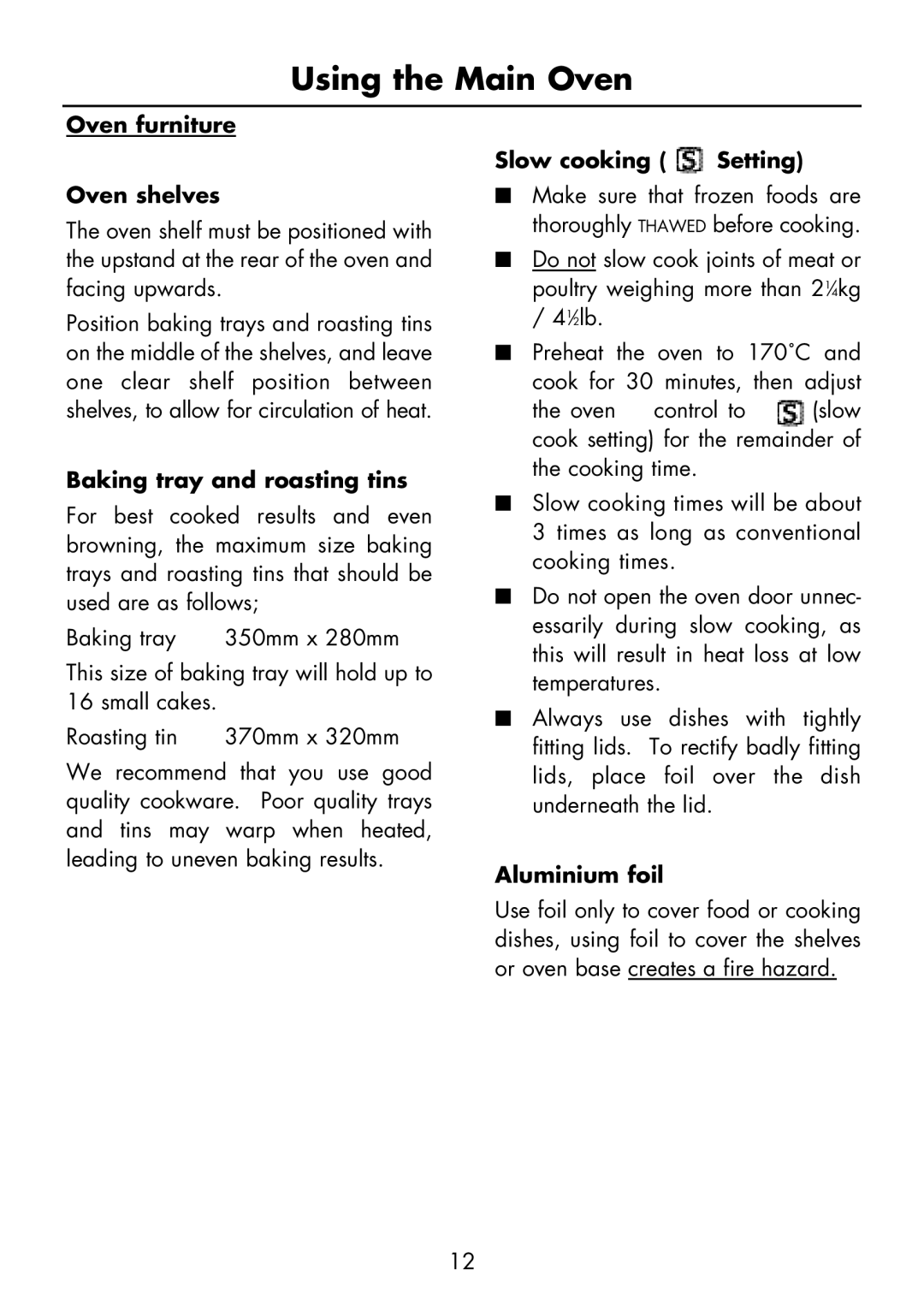
Using the Main Oven
Oven furniture
Oven shelves
The oven shelf must be positioned with the upstand at the rear of the oven and facing upwards.
Position baking trays and roasting tins on the middle of the shelves, and leave one clear shelf position between shelves, to allow for circulation of heat.
Baking tray and roasting tins
For best cooked results and even browning, the maximum size baking trays and roasting tins that should be used are as follows;
Baking tray | 350mm x 280mm |
This size of baking tray will hold up to 16 small cakes.
Roasting tin | 370mm x 320mm |
We recommend that you use good quality cookware. Poor quality trays and tins may warp when heated, leading to uneven baking results.
Slow cooking ( | Setting) |
| |
■ | Make sure that frozen foods are | ||
■ | thoroughly THAWED before cooking. | ||
Do not slow cook joints of meat or | |||
| poultry weighing more than 21⁄4kg | ||
■ | / 41⁄2lb. |
|
|
Preheat the oven to 170˚C and | |||
| cook for 30 minutes, then adjust | ||
| the oven control to | (slow | |
| cook setting) for the remainder of | ||
| the cooking time. |
|
|
■Slow cooking times will be about 3 times as long as conventio nal cooking times.
■Do not open the oven door unnec- essarily during slow cooking, as this will result in heat loss at low temperatures.
■Always use dishes with tightly fitting lids. To rectify badly fitting lids, place foil over the dish underneath the lid.
Aluminium foil
Use foil only to cover food or cooking dishes, using foil to cover the shelves or oven base creates a fire hazard.
12
